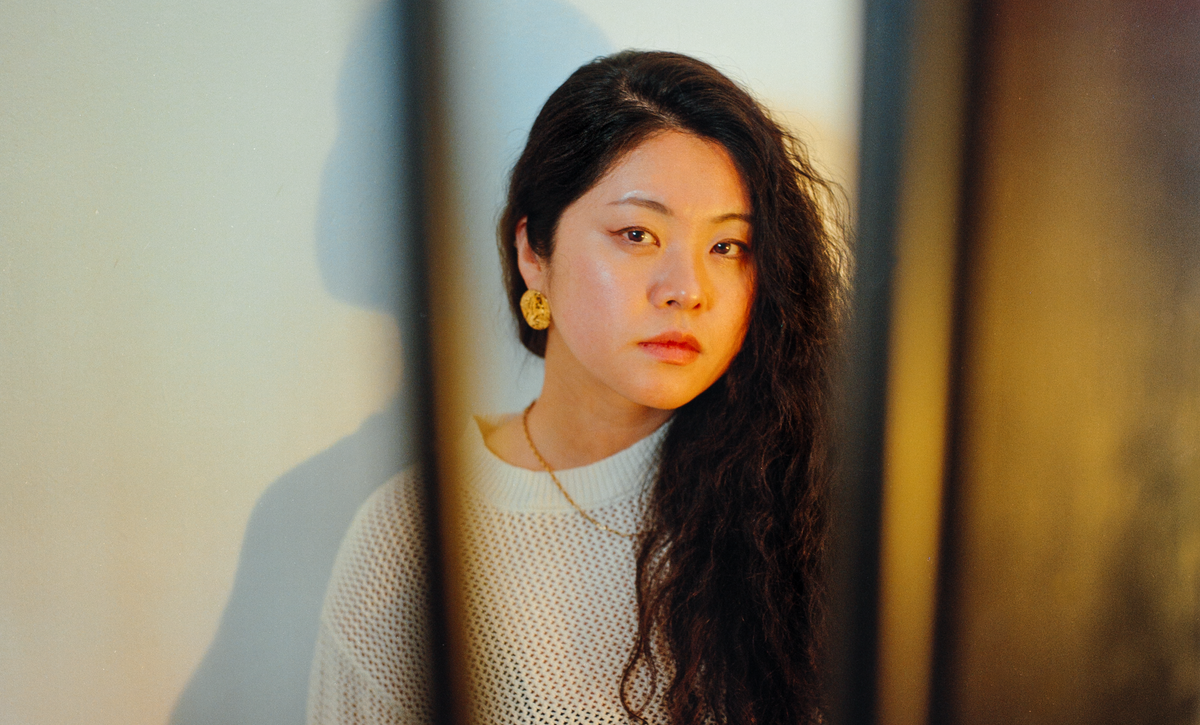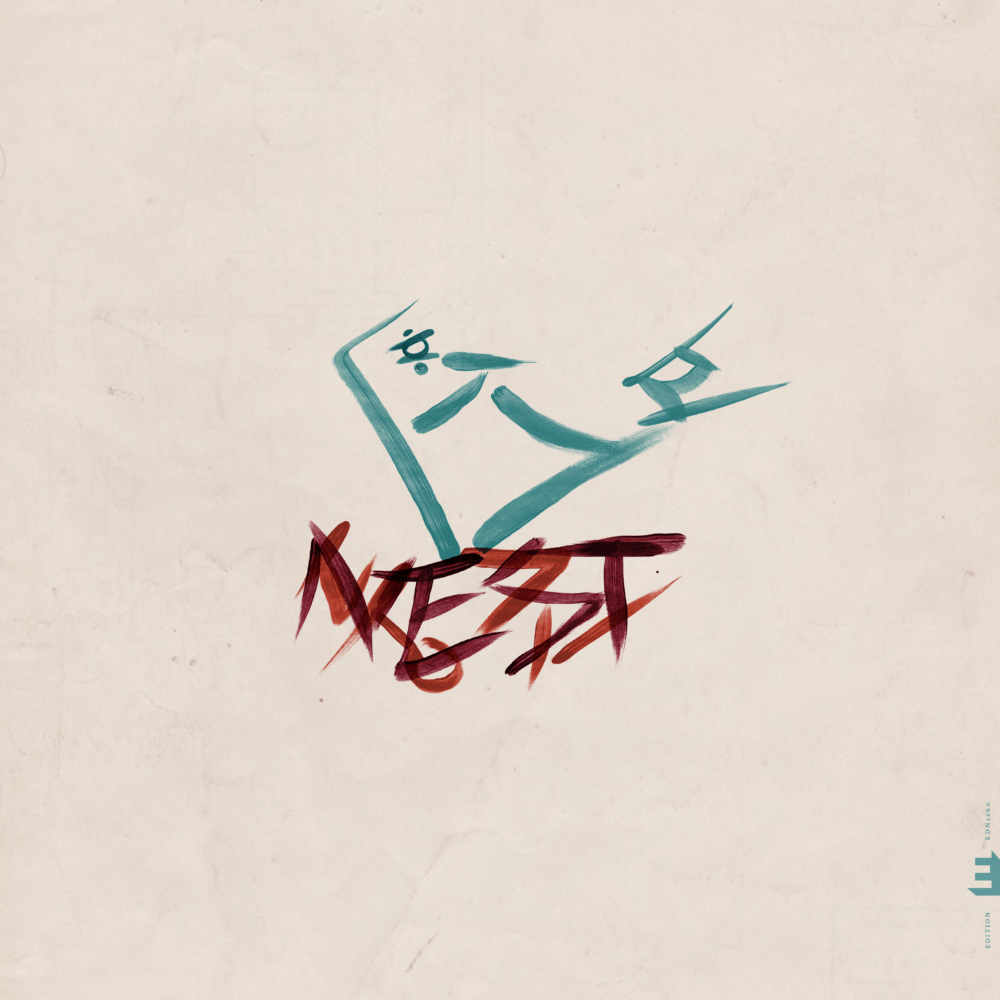Sun-Mi Hong: crafting a musical nest in every jazz note

Unlike natural shelters, melodies and harmonies arise from this nest—ethereal layers floating through the air, waiting to be heard. At its core, it holds the journey of her or yours: a story of those who evolve far away from home.

The emotional aesthetics go beyond the music. On the cover, her name simulates a bird standing in the nest. Is it preparing to fly, or just resting for a while? This multisensory experience is called Fourth Page: Meaning of a Nest, the new production of drummer Sun-Mi Hong, a modern jazz record full of delicate cymbal textures that, as she reveals, evokes her past but pulses with her present. "The meaning of a nest is where you have your friends and family. It doesn’t have to be strictly blood-related; it’s about feeling surrounded by people you can rely on."
Almost fifteen years ago, Hong left South Korea with a goal in mind, one that started when she was a child. "I grew up visiting a Protestant church, where we had music services. That was the first time I saw a drum set, and I felt a strong connection; my eyes lit up. I had learned piano briefly when I was very young, but it didn’t stick with me. The drums, though—there was a spark in my eyes and heart." That moment sparked a lifelong bond that would eventually carry her to craft her fourth studio album. "Starting wasn’t easy, drums are often considered a male instrument, and my parents didn’t like the idea. It was difficult, and it took years of fighting before I could start."
Just a few years ago, Sun-Mi wasn’t thinking about a professional career—she was immersed in her love for drumming and jazz. But now, based in Amsterdam and with a quintet under her name, she faces the pressure of expectation, "I try to avoid them," she says. "For me, the composition process has to be completely honest." At her side, Alistair Payne on the trumpet, Nicolò Ricci on the tenor saxophone, Chaerin Im on the piano, and Alessandro Fongaro on the bass, together, they shaped the nest. "During rehearsals, I often don’t know what to play on the drums, even though they are my compositions. I bring the music to the band without having my part yet. I give them the sheet music, let them play first, and listen. Then I ask myself: What’s the simplest thing I can add? What can I contribute to our music?"
In the intimacy of the composition process, Hong is more like an architect: she approaches the piano visually, as if she were building a house, with different shapes, floors, and layouts. "I compose all my songs on the piano," she asserts. However, there's an unconventional approach: "I can't improvise or play written music very well. I almost compose with just two fingers. I use the piano in my way—choosing notes I love, listening closely with my ears, but that doesn’t mean my compositions follow traditional rules." Her visual approach even transforms the piano keys into a game of Tetris, with blocks and lengths. "My band members sometimes struggle to play my music by memory, because there’s not always a clear structure. I compose in a way that might not make sense for them to memorize or solo over easily, but for me, it makes perfect sense in my ears."
Sometimes one song comes together in a few hours, while others take two years. I'm listening back, wondering if I should erase something or leave it as is. I’ll play it again, and sometimes I don’t like it. There's a lot of doubt in the process. At the same time, I need to trust my band. If they think something sounds good, I believe them.
Her music prioritizes feeling over fixed grooves, weaving melodic sounds that transcribe her life. This feeling reflects her journey of finding home, as she explains: "The album is about settling into a new environment and embracing my homeland. For a long time, I tried to ignore it. I tried hard to avoid identifying as Korean because I felt it wasn't helping my career. My background and my parents weren't wealthy or particularly supportive, and having a Korean passport made things difficult, especially with visa issues when living in Europe," she reveals. "I tried to avoid being Korean, which was very difficult. I tried to become something else: maybe European. I didn't like the fact that I looked Asian; I struggled with that conflict for many years."
Music has helped her build her new nest without forgetting where everything started. "As I got older and experienced more, I began to embrace the reality: yes, I'm from such a beautiful country with a rich history and music. Korean people have many heartwarming qualities, like sharing and caring. That's something I've started to appreciate in recent years."
Each track weaves a memory or a reconciliation of heritage and individuality. Across the album’s eight tracks, the quintet interacts freely, expressing their feelings. With this personal, communicative quality, they converse through improvisation, adopting the past while embracing the present. Hong sees her music as a bridge for others, as she expressed: "I'm a jazz drummer from an Asian country. I'm sure many people can relate—people who moved to another country for work or to follow their passion, and who have to adapt to a completely different society. It's not easy, but those people deserve respect. My music reflects this inner strength, and I hope those who listen can connect with it."
Fourth Page: Meaning of a Nest is a sonic meeting place full of details. The dialogue between Sun-Mi Hong and her band embraces a wide spectrum of emotions and experiences. Through their interplay, the instruments come alive; at moments, they seem surprised and joyful as if they have the eyes of a baby, and then, they adopt the pain of adversity and seem to cry. The nest is open to all who want to listen to this story—and above all to those seeking to give music to their journey.